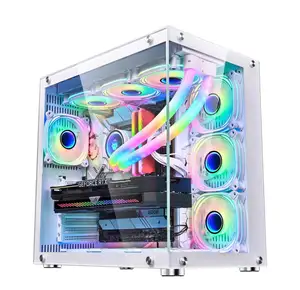Popular in your industry







































 Ready to Ship
Ready to Ship




















































































































































Top categories
About video vcd
A Video CD (VCD) is an optical disc that stores video and audio content. It follows the VCD standard, which was developed by Sony, Philips, Matsushita, and JVC in the 1990s. A typical VCD has a storage capacity of 74 to 80 minutes of audio and video content. The VCD format uses MPEG-1 compression to store video and audio data, allowing for decent quality video playback. The disc is often 12cm in diameter, similar to a standard CD. To play a VCD, a compatible VCD player or a computer with appropriate software is required. The VCD format is sometimes referred to as a CD VCD or a VCD video CD. A VCD is distinguishable from a standard CD by the video content it holds, and it is a precursor to DVDs.
Features of a VCD
One feature of a video CD (VCD) is its video and audio content. A VCD can store up to 74 to 80 minutes of video and audio content. The video quality is generally considered to be VHS quality, which is lower than that of DVDs. A VCD is also compatible with VCD players and DVD players that support the VCD format. The VCD disc is typically 12cm in diameter, like a standard CD, and has a storage capacity of 650 to 700 MB. A VCD follows the VCD standard, which specifies the format and structure of the disc. It uses MPEG-1 compression to store video and audio data, allowing for relatively efficient use of storage space. A VCD can be played on a VCD player or a computer with appropriate software. The VCD format is sometimes referred to as a video CD VCD or a CD VCD.
Applications of VCDs
VCDs are used in various applications due to their video and audio storage capabilities. One common use is for home video distribution. People can create their own VCDs by burning video and audio content onto blank VCDs. These homemade VCDs are often used to share personal videos, such as family events or vacation memories, with friends and family. Educational institutions may also use VCDs to distribute instructional videos, especially in regions where access to high-speed internet is limited. Additionally, VCDs are sometimes used for commercial video distribution. For example, in the 1990s, VCDs were used to distribute movies in regions where DVD players were not yet widely available. While the VCD format has been largely replaced by DVDs and digital streaming services, it still holds nostalgic value for some and continues to be used in certain contexts.






































































